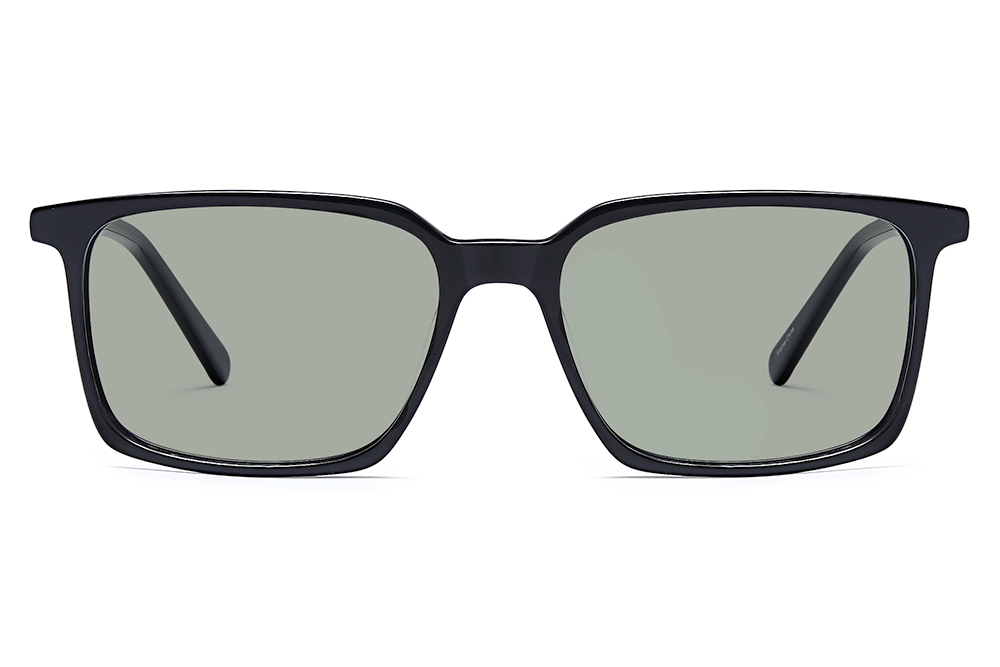Migraine Glasses - Understanding the Science Behind Avulux®

- The Relationship Between Light and Migraine
- Precision Tinted Lenses and Filters
- Testing A Next-Generation Migraine & Light Sensitivity Lens
- The Migraine and Photophobia Problem (also known as “light sensitivity”)
- Avulux's Solution to Your Light Sensitivity Dilemma
- What Are Migraine Glasses?
- Why Avulux Migraine Glasses Over Other Glasses (Photophobia Glasses, Light Sensitivity Glasses, Blue Light Blockers, and FL-41)?
- What Did You Learn?
- The Avulux Promise
- References
The Relationship Between Light and Migraine
Certain Light Affects the Cells in Your Eyes
Our eyes have the ability to process light thanks to two photoreceptors (light receptors) located at the back of the retina called rods and cones.
Based on a study run in 2010, we know that there are other intrinsically-photosensitive retinal ganglion cells (ipRGC’s) at the back of the retina3. These ipRGCs can release melanopsin when activated by certain wavelengths of light in the 400nm to 500nm range5. One of the functions of melanopsin is to aid your vision with color correction in high-brightness situations.
If you have migraine, you are likely to experience an increase in pain in bright-light situations. In the same 2010 study, it was found that the exacerbation of migraine related headaches by light are likely to involve both extrinsic photoactivation of ipRGCs by rods and cones, as well as intrinsic photoactivation of melanopsin3.
To put it simply, exposing your eyes to light that activates these cells has been found to worsen migraine attacks.
Avulux used the research behind melanopsin as one of the main scientific drivers behind the optical engineering involved in creating Avulux migraine glasses.

Precision Tinted Lenses and Filters
Gray Filters vs Precision Filters
A study in 2011 tested precision tinted filters versus gray filters and simple colored filters on subjects with migraine who were made to look at a series of illusions and visual distortions.
The researchers found that the subjects’ brain activation normalized when they observed the visuals through the precision tinted filters (glasses) versus the other filters. They concluded that their study suggests a neurological basis for the therapeutic effect of precision tinted lenses4.
With good reason, people with migraine quickly run to a dark room at the onset of their migraine symptoms. However, it’s simply impossible at times. Migraine affects people in the most productive years of their lives. It’s not always reasonable to drop what you’re doing, run into a dark room, and cancel your plans.
Testing A Next-Generation Migraine & Light Sensitivity Lens
2016 Avulux Study
Avulux's team of researchers put a new lens to the test in 2016. That study6, which is now published in the Journal of Clinical Neuroscience, explored the effect of wearing glasses that blocked wavelengths of light in the 480nm notch against lenses blocking at the 620nm notch.
The findings were eye opening. The researchers further studied and reviewed clinical evidence to determine why there was such a positive effect with either lens. They determined there's a physiological basis in the response they observed per a study performed in 20097, wavelengths at 481nm and 587nm are the peak bands affecting Melanopsin, the previously discussed ipRGC.
This study was the basis for the further evolution and engineering of the Avulux lens.
2020 Avulux Study
After the 2016 study, the Avulux team engineered a new multi-band precision optical filter. The enhanced Avulux lens, which is the lens available to you today, absorbs up to 97% of the most harmful blue, amber, and red light while allowing soothing green light through.
An independent third party conducted a randomized, double-blind, placebo-controlled study comparing the benefits of wearing the Avulux lenses versus clear placebo lenses on subjects with episodic migraine (clinical resources).
It was found that wearing Avulux to precisely filter light, as part of a healthy lifestyle, could help people living with migraine.
Both clinical and statistical significance was achieved when analyzing the data. Which means that the results can be replicated and are clinically meaningful.The Migraine and Photophobia Problem (also known as “light sensitivity”)
Photophobia Affects Most People with Migraine
Approximately 80% of people with migraine experience photophobia1. It’s no mystery that light sensitivity is a major issue for them, yet the majority of treatments on the market do not address it.
A study conducted in 2016 had subjects with migraine placed in a dark room2. The subjects were then intermittently exposed to varying colors of light (white, blue, green, amber, and red) and assessed for:
- Intensity of their headache
- Throbbing sensation
- Muscle tenderness
- Cephalic areas (areas on the head) affected by the pain.
Findings
The researchers found that white, blue, amber, and red light increased the subjects’ headache pain intensity, while green light was actually shown to reduce pain intensity.
Therefore, filtering out the specific wavelengths of light while allowing in green light may prove beneficial2.

This study's findings aligned with what the Avulux researchers found in their 2016 study. Avulux's engineers worked to refine a lens to prevent the wavelengths of light around the green band of the spectrum from entering a wearer's eye.
Avulux's Solution to Your Light Sensitivity Dilemma
Over eight years of optical engineering, experimentation, and clinical research have gone into developing the Avulux lenses specifically for light sensitivity (photophobia) related to migraine. That lens is now used in Avulux Migraine & Light Sensitivity Glasses. It is a new generation of precision tinted optical filter, that means it is a lens for glasses that more effectively and efficiently absorbs wavelengths in high percentages at only certain slivers of the light spectrum.
Avulux customers report back that they feel like they’ve just run into a dark room after putting on their Avulux migraine glasses!
Feeling like Avulux is Your Portable Dark Room™ is no coincidence. Avulux’s precision tinted optical lenses are specifically designed to absorb up to 97% of the most harmful wavelengths of light, while allowing the beneficial wavelengths of light in. Unlike other glasses or sunglasses, Avulux allows in the soothing wavelengths of green light. Unlike sunglasses, wearing Avulux continuously will not make you more sensitive to light, it will not cause chronic dark-adaptation.
The Avulux lens protects your eyes, and effectively your brain. Avulux's lenses have been refined to do so without turning your world dark or any uncomfortable color like red, green, or yellow. You'll probably forget you're even wearing them as your color perception remains intact and your color contrast increased.
Our lenses absorb light so well, and from many angles, that we can use traditional frames instead of wrap-around frames to achieve the same results.

That dark room you’ve always wanted to carry in your pocket is now a reality.
What Are Migraine Glasses?
An Engineered Light Management Solution
In today’s terms, it's Avulux's migraine glasses. As the only evidence-based lens of its kind, Avulux precisely filters light and may help those living with migraine. They are safe, effective, and wearer's don't build a tolerance to Avulux's positive effects. Now, you finally have access to this tool at any time to effectively manage the impact of light and seize the day.

Why Avulux Migraine Glasses Over Other Glasses (Photophobia Glasses, Light Sensitivity Glasses, Blue Light Blockers, and FL-41)?
Other Glasses
The term migraine glasses has historically been used to label glasses that have helped some people cope with their migraine related light sensitivity. Maybe you’ve associated migraine glasses with:
- Blue light blockers
- FL-41 (dark, rose-tinted glasses)
- Light sensitivity glasses
- Photophobia glasses
- Dark orange, red, blue, or green glasses
Prior to Avulux, these glasses were the only available non-evidence-based optical filter solutions that physicians and people with migraine and photophobia were driven to use.
Avulux is the first and only clinically proven precision optical filter (glasses lens) that selectively filters harmful light while letting soothing light in, which may help people living with migraine and light sensitivity.
Shortfalls of Other Glasses
These glasses may only prevent a portion of harmful light from entering your eyes.
Also, they normally use a film that is placed on the surface of the lens. If that film becomes scratched, it affects the lens' efficacy at preventing light from entering your eyes.
Although wearing these other glasses for light sensitivity relief may be better than not wearing any at all, these non-evidence-based lenses aren't clinically proven to help manage light during a migraine attack.
Not all optical lenses are the same and lenses can vary wildly without strict quality control. Even lenses that are made in the same lab!
Avulux's lens laboratory has nearly 40 years of experience in the lens market and maintains strict quality control measures to ensure a consistent premium lens in every pair of Avulux glasses.
Read more about migraine glasses here.
The Only Lens with Evidence-based Results
The unique and patented10 Avulux lens technology is designed to precisely and effectively absorb the additional harmful wavelengths of light that other glasses on the market do not absorb. Best of all, you can wear them indoors and outdoors without color distortion.
If you haven’t tried the patented Avulux glasses, then you haven’t truly tried migraine & light sensitivity glasses. The term migraine glasses is given a whole new meaning. Experience what could be your essential light management tool.
Wearing Avulux does not cause any negative side effects and you can try them for 60 days.
Reliability
Avulux migraine lenses are hardcoated and anti-scratch.
Avulux's migraine & light sensitivity lens technology is engineered into the lenses uniformly at the molecular level. That means that if your lenses do become scratched, it won't affect the amount of light prevented from entering your eyes. The entirety of the lens effectively works to keep your eyes and your brain safe.
Our frames are lightweight, durable, stylish, and comfortable. Avulux migraine glasses will become your go-to tool in your migraine & photophobia toolkit.
Without Avulux:
- Are you struggling with the impact of light on your migraine brain?
- Do you feel isolated and like migraine and light sensitivity often takes over your schedule?
- Are you finding yourself remaining indoors or avoiding brightly lit places to reduce your exposure to migraine triggers?
- If you're wearing other glasses, are the heavily tinted lenses distorting your color perception?
- Are the tints on your glasses scratching off, leaving you exposed to light?
With Avulux:
- You can precisely filter harmful blue, amber, and red light without any negative side-effects.
- You have a clinically proven light management tool.
- Face the light, spend time with your favorite people, feel comfortable working in front of your computer for an extended period.
- Feel confident that Avulux will continue performing together with you to keep you protected from the light and keep your eyes and brain relaxed.
- We care about your wellbeing and hope you’ll use Avulux to help you be at your best.

What Did You Learn?
- Light can negatively affect people with migraine and/or light sensitivity.
- Certain wavelengths of light are harmful and painful while others are beneficial.
- Several studies hypothesized that migraine attacks (migraines) can be prevented by preventing specific wavelengths of light from entering your eyes.
- Most people with migraine suffer from light sensitivity.
- Avulux is clinically proven and may, as part of a healthy lifestyle, help those living with migraine by precisely filtering light.
- Avulux can be worn anytime to keep your eyes relaxed, like when you're working behind a screen or under harsh lighting.
The Avulux Promise
We understand how harsh light can impact your quality of life.
When you make the decision to try Avulux for yourself, do so confidently. Your well being is top of mind, so you have 60 days to try Avulux at home -- it's your time to experience how Avulux can effectively manage light for you.

Try Avulux Migraine Glasses at Home for 60 Days.
References:
1 Choi, J.-Y., Oh, K., Kim, B.-J., Chung, C.-S., Koh, S.-B., & Park, K.-W. (2009). Usefulness of a Photophobia Questionnaire in Patients With Migraine. Cephalalgia, 29(9), 953–959. https://doi.org/10.1111/j.1468-2982.2008.01822.x
2 Rodrigo Noseda, Carolyn A. Bernstein, Rony-Reuven Nir, Alice J. Lee, Anne B. Fulton, Suzanne M. Bertisch, Alexandra Hovaguimian, Dean M. Cestari, Rodrigo Saavedra-Walker, David Borsook, Bruce L. Doran, Catherine Buettner, Rami Burstein, Migraine photophobia originating in cone-driven retinal pathways, Brain, Volume 139, Issue 7, July 2016, Pages 1971–1986, https://doi.org/10.1093/brain/aww119
3 Noseda R, Kainz V, Jakubowski M, et al. A neural mechanism for exacerbation of headache by light. Nat Neurosci. 2010;13(2):239–245. doi:10.1038/nn.2475 https://www.ncbi.nlm.nih.gov/pmc/ articles/PMC2818758/
4 Huang J, Zong X, Wilkins A, Jenkins B, Bozoki A, Cao Y. fMRI evidence that precision ophthalmic tints reduce cortical hyperactivation in migraine. Cephalalgia. 2011;31(8):925–936. doi:10.1177/0333102411409076 https://www.ncbi.nlm.nih.gov/pmc/articles /PMC3132147/
5Brown, R Lane, and Phyllis R Robinson. “Melanopsin--shedding light on the elusive circadian photopigment.” Chronobiology international vol. 21,2 (2004): 189-204. doi:10.1081/cbi-120037816. https://www.ncbi.nlm.nih.gov/pmc/ articles/PMC2376768/?report=classic
6 Hoggan RN, Subhash A, Blair S, et al. Thin-film optical notch filter spectacle coatings for the treatment of migraine and photophobia. J Clin Neurosci. 2016;28:71-76. doi:10.1016/j.jocn.2015.09.024
https://www.ncbi.nlm.nih.gov/pmc/articles /PMC5510464/
7 Mure LS, Cornut PL, Rieux C, et al. Melanopsin bistability: a fly's eye technology in the human retina. PLoS One. 2009;4(6):e5991. Published 2009 Jun 24. doi:10.1371/journal.pone.0005991
https://pubmed.ncbi.nlm.nih.gov/19551136/










